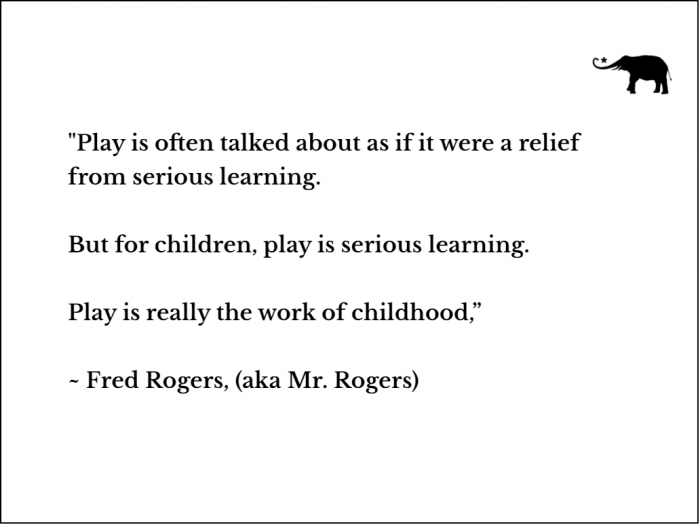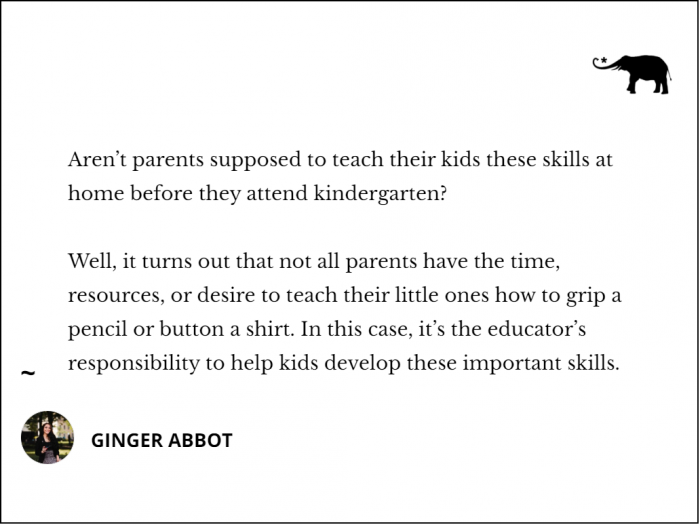Learning how to develop fine motor skills in children is a skill that many educators overlook.
Aren’t parents supposed to teach their kids these skills at home before they attend kindergarten?
Well, it turns out that not all parents have the time, resources, or desire to teach their little ones how to grip a pencil or button a shirt.
In this case, it’s the educator’s responsibility to help kids develop these important skills. Otherwise, they might continue to fall behind their peers, experience serious delays, or become overdependent on adults.
Here’s how teachers can help develop fine motor skills with common household items and simple educational tools:
Buttons
Buttons of all shapes and sizes are excellent tools for developing fine motor skills. Younger kids can strengthen the small muscles in their hands and fingers by picking them and moving them from one container to another.
Older children can try stringing them onto pipe cleaners or yarn or begin buttoning and unbuttoning materials. That final skill takes some amazing hand-eye coordination, so start slow and be patient.
String
Whether teachers have buttons handy or not, providing students with string can help them refine their fine motor skills in numerous ways.
Tie knots, braid multiple strands, make necklaces and bracelets, or use tape, beads, paint, and other materials to make the most of craft time. Teachers can even use “lace and trace kits” to encourage weaving or beginner sewing skills.
Rubber Bands
Educators who want to help students work on finger flexion and extension, should incorporate rubber bands into the lesson plan.
This handy tool improves finger strength in the opposite way that most materials do. Instead of working on grip strength, rubber bands will help children strengthen muscles that allow them to stretch and open their hands.
Provide students with bands of various sizes so they can experience different levels of resistance.
Play-Doh
No sensory diet is complete without some good old fashioned Play-Doh.
This material encourages squeezing, kneading, rolling, pulling and other movements that are necessary for proper development and a full range of motion. Tactile materials like slime or Play-Doh can be a huge benefit to motor play.
Syringes
If teachers want to incorporate a few different tools into their curriculum, syringes are an excellent choice.
Choose kid friendly syringes with plastic tips and fill them with water or paint. Then, let the kiddos practice filling and squirting the syringes onto paper or a large canvas. Afraid of making a mess? Choose eco-friendly paints and spend some time painting the sidewalks or grass outside.
Pencil Grips
Young kids often struggle to write legibly, especially as they’re learning how to read and write. Luckily, pencil grips can help children get a better grip on their writing utensils and strengthen their hand and wrist muscles.
Those who can’t sustain a tripod grasp might benefit from using an original ergonomic writing aid. Others who struggle to grip slim pencils could use an egg pencil grip or pencil weight.
Toothpicks
Toothpicks are another great tool for helping kids develop their pincer grasp.
Pair them with foods like grapes and marshmallows during snack time or use these materials to build towers or sculptures. Whip out the Play-Doh and make porcupines, fences, sea urchins, and more. Organize a craft or leave the kids to their own devices and watch how they use imagination to create something new.
Shape Sorters
While common household items can be powerful tools for developing fine motor skills, items like shape sorters can also come in handy. Of course, many students may already have played with shape sorters as babies. However, teachers can still use them to teach shapes and colors, and the ones with more complex shapes might still pose a challenge to younger kids.
Prepare to Help
Parents and educators alike should prepare to help children use the tools above. Unlike sleeping and eating, fine motor skills aren’t automatic. Depending on the activities students participate in at home, some might lack muscle strength and hand-eye coordination.
Therefore, it’s important to be present and available to help them during these activities.
~











Read 0 comments and reply